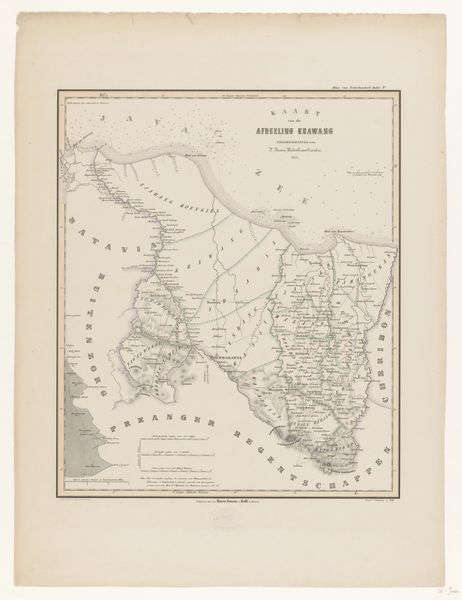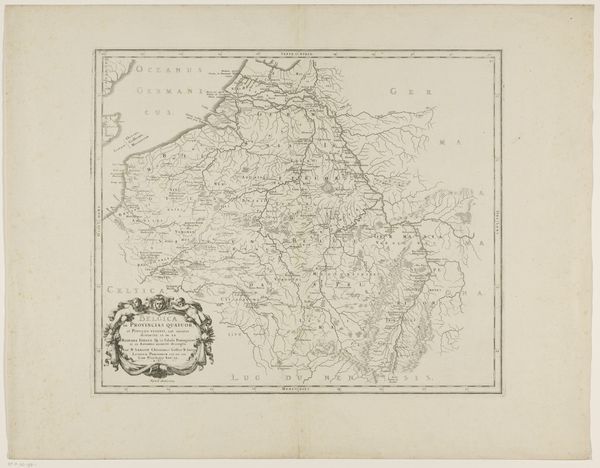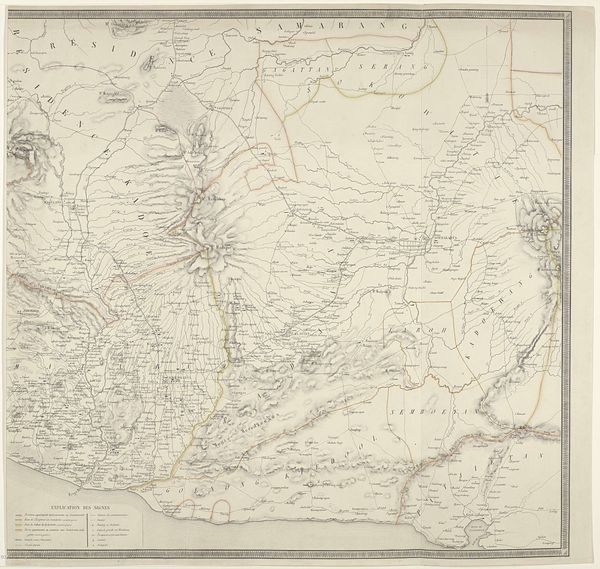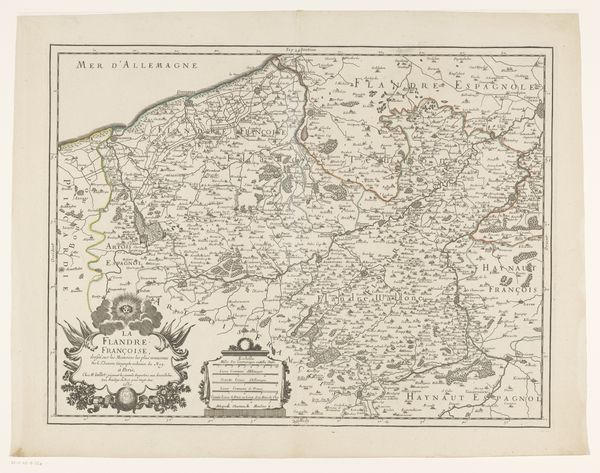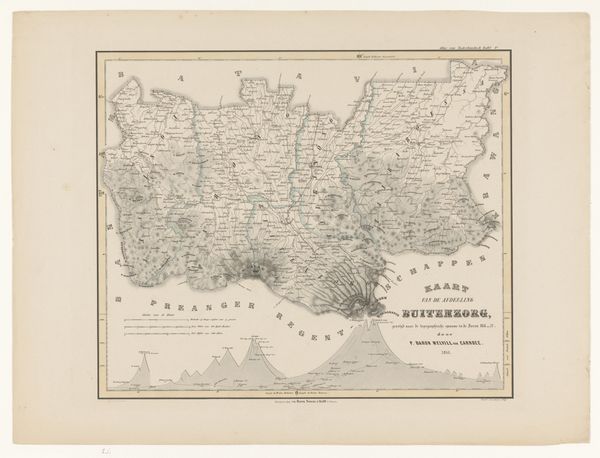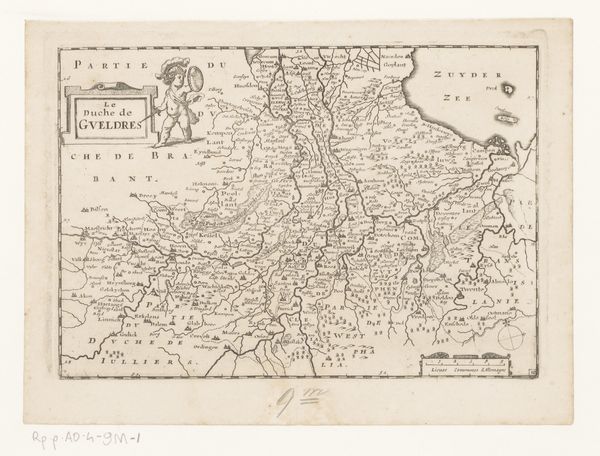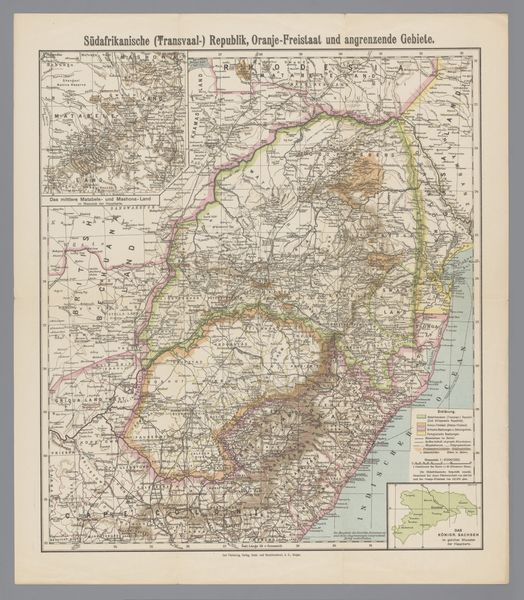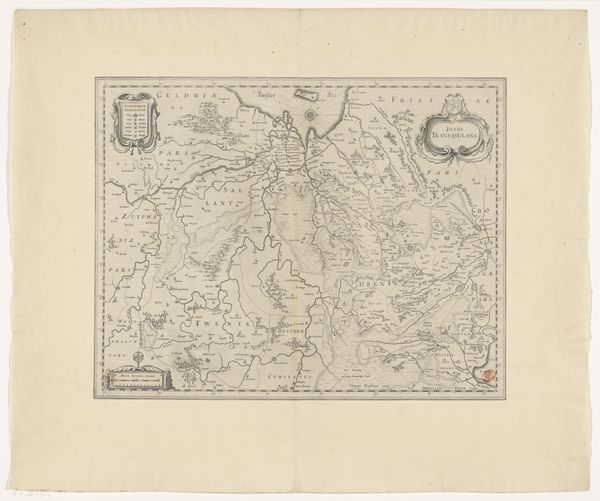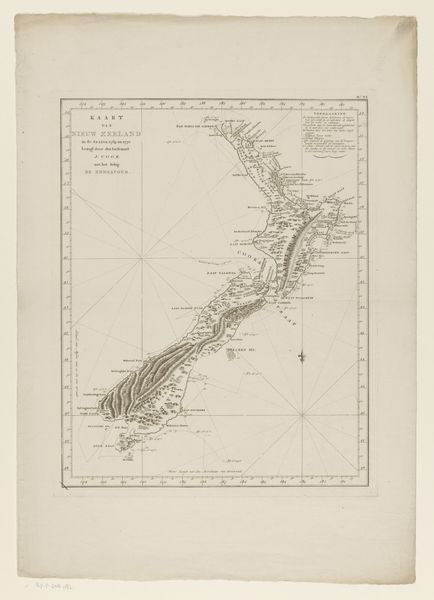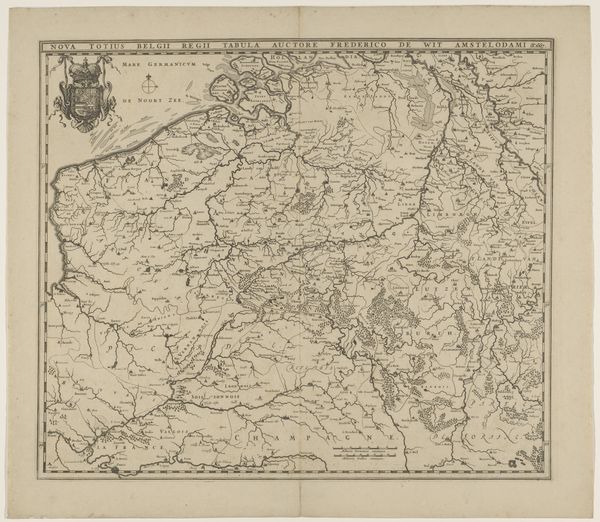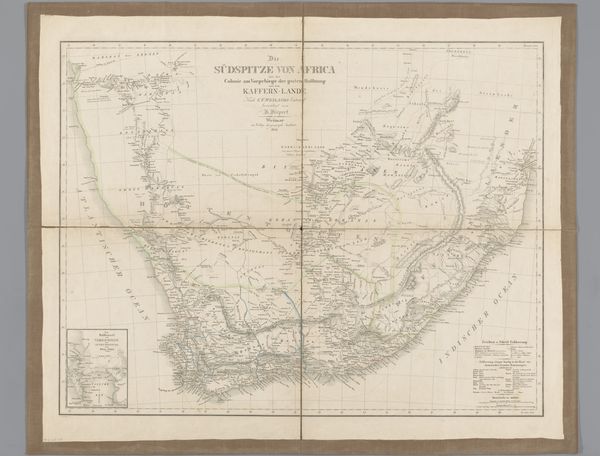
print, engraving
# print
#
engraving
#
realism
Dimensions: height 535 mm, width 400 mm
Copyright: Rijks Museum: Open Domain
Curator: The delicacy and precision! Before us, we have a print entitled “Kaart van de Minahassa in de Residentie Manado” dating to 1853. It is an engraving. It's essentially a map. Editor: Maps hold such curious power, don't they? This one, though, is unexpectedly striking. Its neutral palette with fine engraved lines somehow projects the solemnity of cartography, with peaks rising in gentle shading like sighs of land itself. Curator: Exactly. Each geographic feature is meticulously rendered, bearing place names in the cartographer’s clear script. These are not merely lines and empty space. What unfolds for me is an assertion of territory and also an articulation of a colonizer's will—of both capturing and controlling information and space. It gives me an acute sense of the world shaped and dictated by these powers. Editor: Semiotically, that kind of intention is really conveyed through the very clear delineation of boundaries. Observe, though, how the rendering itself employs a subdued realism, an absence of the traditionally romantic flourishes. It gives an empirical tone—a sense of dispassionate observation—almost an alibi for the project of cartography. It is about as free of embellishment as any landscape is able to be. Curator: I see it now, a veneer that barely covers what they are imposing upon a landscape and its people. The Western obsession to categorize, divide, and dominate resonates powerfully with its rendering style and its intended audience, so certain that progress follows control. Editor: Yes, isn't that striking—how that sense of detachment really comes across. Considering that what is absent becomes incredibly loud when the visual presentation is reduced in such a way. Curator: Maps speak even louder for those unrepresented on it. They’re an imposing force in cultural representation. Editor: True. And this analysis of how it has been laid out structurally emphasizes a greater cultural understanding of the time. The print here seems to reveal more about the cartographer and that project rather than purely describing the place it charts. Curator: Perhaps it reminds us, in its quiet way, of how even realism, or any attempt toward objectivity, is ultimately still constructed. Editor: Beautifully said. Thank you for making me rethink my quick interpretation, offering this enriching context to appreciate better how cartography influences our perception.
Comments
No comments
Be the first to comment and join the conversation on the ultimate creative platform.
